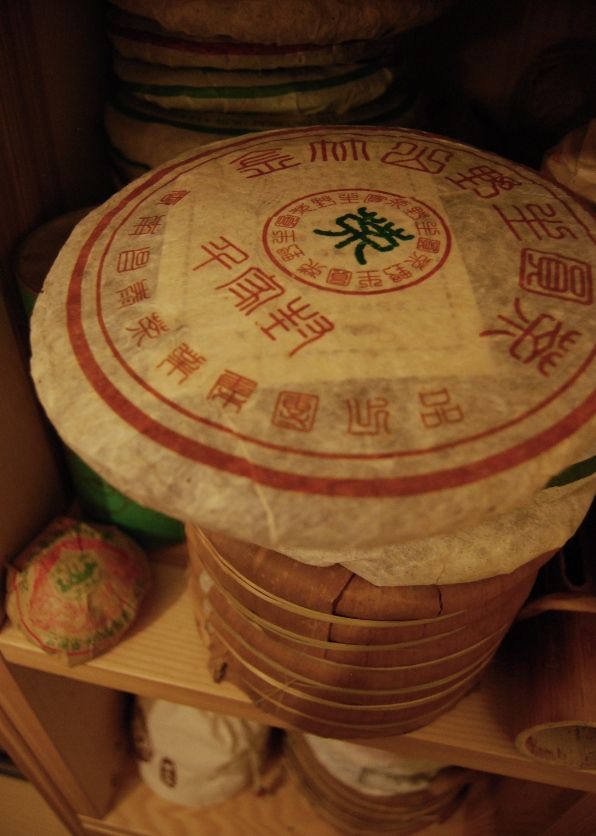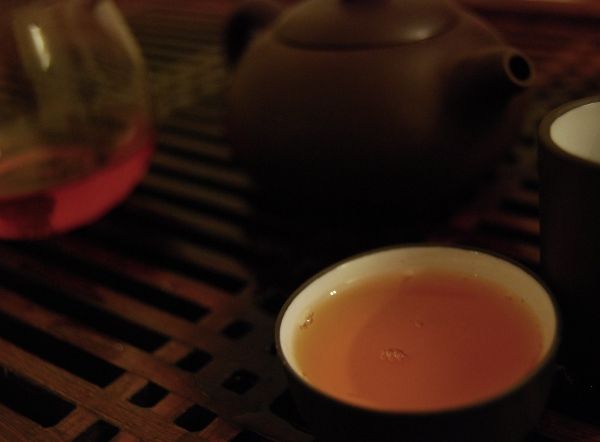It's all very well writing about tea, but what if we're looking to buy something immediately? What's available and decent?
If we're not delving into Taobao, and assuming that we've all tried and enjoyed some of the Essence of Tea 2010 cakes, then my currently-available picks really come down to two web-sites.
At China Chadao, I like the full range of Douji cakes. Jerry seems to stock the entire ranges from 2009 and 2010; while I haven't tried the latter, I did thoroughly enjoy the former. Douji are always stable, very good examples of their various single-mountain sources, and China Chadao price them very attractively. If I were looking for a few tong of good recent tea, then I'd be looking into this Douji range. The Zhimingdu range is a cheap-and-cheerful version, offering another good introduction to each mountain (particularly the series of single-mountain mini-cakes).
My other choice is Red Lantern Tea, where I particularly like Jongky's selection of Changtai cakes. These stretch back to the earlier half of the 2000s, and you can pick up some excellent older cakes for just a tad more than the current range of 2010s. If I were looking for a few tong of something with a little age on it, then I'd be looking into the Changtai back-catalogue here.
The "cha" stamp is quite rustic, and blurred
While standard Changtai cakes may not be too exciting, the "premium" brands from this factory are excellent. One or two readers traditionally disagree with me on this point, but I usually find Yichanghao cakes, for exanple, to be highly reliable and not expensive.
Today's cake is from their "other" premium brand, Qianjiafeng [chee'an jee'ah fung]. The mighty Babelcarp (which appears to be sporting a dashing new look) recently taught me that the name of this brand refers to Qianjia Village, on Jinzhushan [jin djoo shan, or Golden Bamboo Mountain], where a supposed 2,700-year-old tea-tree resides. Thus, it is unsurprising that the Qianjiafeng brand seems entirely focussed on the "Jinzhushan" recipe. I've previously tried the 2009 version, thanks to the generosity of Jongky at Red Lantern, and the 2006 version, thanks to Gordon at Dragon Teahouse.
(In fact, holding the front page, Dragon Teahouse appears to have restocked one of my all-time favourites, and one of Douji's first cakes, the 2006 Yiwu Zhengshan, which I originally found in Maliandao in 2007, and then bought in quantity from Yunnan Sourcing until Scott's stock expired. At $35, this is a scorching bargain.)
This 2005 version comes thanks to the generosity of Keng.
Not a dense bing, the compression makes it easy to separate leaves without breakage
As with most good Changtai cakes, this is made from almost-whole leaves, from aged, coppery tips to time-darkened basis leaves. I remember that the modern versions of this recipe contains a minority of reddened, processed leaves, presumably to add character - this older version doesn't seem to contain many processed leaves, if any at all, and looks entirely proper.
Long, whole leaves as one would hope
Forgive the photography - I found myself up at 4 a.m. (half an hour before Xiaohu awoke, calling for milk!), and so the light is artificial. Pre-dawn drinking has a long-standing place in my affections, and I love to sit downstairs at my tea-table in the near-darkness, while the wind howls down the chimney, and the first birds begin to rise.
Solid orange, marching on through infusions without diminishing
"Golden Bamboo" is a fitting name for this charming Simao-region tea: in flavour, it has a yellow, straw-like woodiness. It is wonderfully astringent and draws plenty of water into the mouth, long after the swallow. I brew it hard, and it responds well.
I often think well of teas that take a few infusions to pick up steam - this cake is very quiet in aroma during the rinse and first infusion, and really only opens up in the second infusion. I often associate this with teas of a certain power, that can be expected to brew a large number of infusions, and last well during the course of the years. Good Changtai cakes age very nicely, and I often revisit my old favourites from this familiar producer.
Warming, well-constructed, and entirely charming, this tea is thoroughly worthwhile. Red Lantern prices it very well, where it is just a little more expensive than the price at which Keng can obtain it from his local Singaporean vendor, and so I can heartily recommend it - particularly for those who, like me, are partial to a bit of the ol' Changtai, and are after something with a few years on the clock for a good price.





The commenter/blogger Big Yunnan believes Changtai was willingly deceptive about the Jinzhu- label. He says that it's not a Qianjiazhai area tea, but Kuzhushan teas. He specifically mentions the 2001 version of this tea a demostrating that Kuzhushan is one of the better aging teas around.
ReplyDelete--shah8
A scandal! Delicious. :)
ReplyDeleteToodlepip,
Hobbes